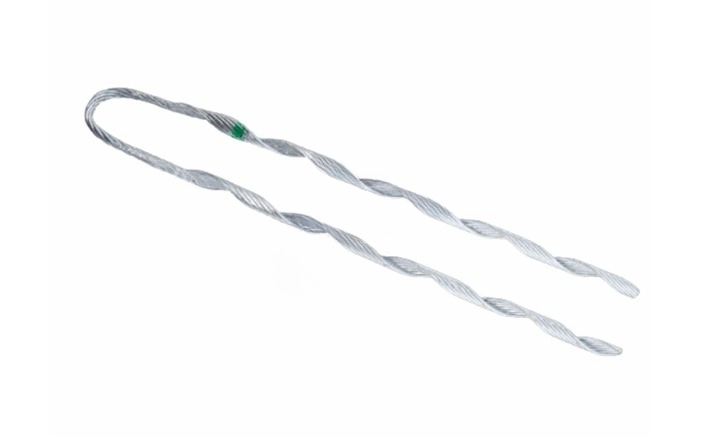
A false dead end refers to a point where the transmission line appears to terminate or has support. It resembles a dead end but it’s not an actual end of the line. It is a specific type of termination or anchoring of a conductor in overhead power lines. A false dead end serves as an intermediate anchor point within a span of transmission line. This helps to manage tension and load distribution without marking the actual termination of the line. It is also used to manage the mechanical tension and sag in the conductors. The dead ends ensure stability and reduces the risk of excessive sag or mechanical failure due to environmental factors. False dead ends are from materials like steel, aluminium and composite materials. They find use in applications like long transmission spans, complex terrains, and load distributions.
Accessories used with false dead end
False dead ends work with various accessories that help ensure their stability and proper functioning. They also help to ensure the mechanical stability and electrical integrity of the transmission lines. Each of the accessories used has specific roles in supporting the conductor, managing tension and reducing vibrations. The following are the common accessories used with false dead ends.
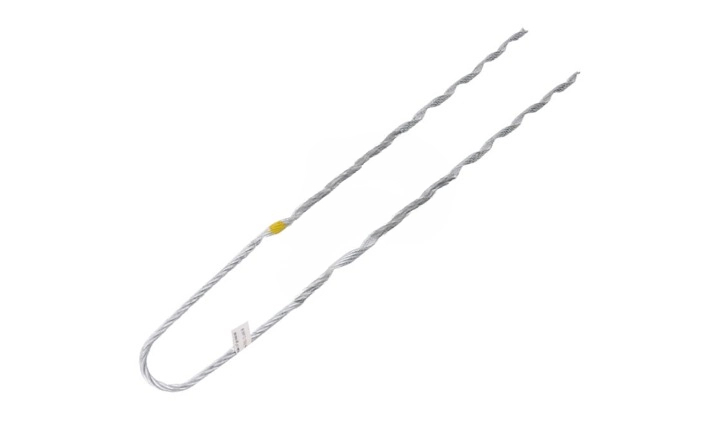
- Dead end clamps – these dead ends help to grip the conductor at the false dead end point. It also provides mechanical support and secure the conductor in place. Common types include bolted type dead-end clamps, compression type and wedge type dead ends.
- Insulators – these help to support the conductor while insulating them from the pole or tower. Insulators also help prevent current leakage and electrical faults. Common types include suspension insulators and strain insulators.
- Anchor rods and anchoring systems – these help to anchor the false dead end structure to the ground or support structure. They also provide mechanical strength and stability. Common types used include helical, grouted and driven anchors.
- Stay wires – these provide extra support and stability to poles or towers at the false dead end. This also helps to counteract the tension in the conductors. Components used include guy wire, guy grips and turnbuckles.
- Vibration dampers – these help to reduce Aeolian vibrations and oscillations in the conductor. They also help prevent damage to the conductor and accessories due to the excessive vibrations.
- Spacers and spacer dampers – these help to maintain the spacing between conductors in a bundled configuration. It also helps to reduce conductor clashing and vibrations.
- Compression sleeves – these help in splicing or terminating conductors. They provide a secure and electrically continuous connection. Common types include inline compression sleeves and dead end compression sleeves.
Factors influencing materials selection for false dead end
False dead ends are from materials that provide reliability and durability. These materials include steel, aluminium alloys, galvanized steel and aluminium alloys. Selection of these materials depend on various factors. These factors ensure the materials provide the necessary mechanical strength and electrical performance. Additionally, it is advisable to balance mechanical strength, corrosion resistance and electrical properties. The following are the factors that influence the material selection for false dead ends.
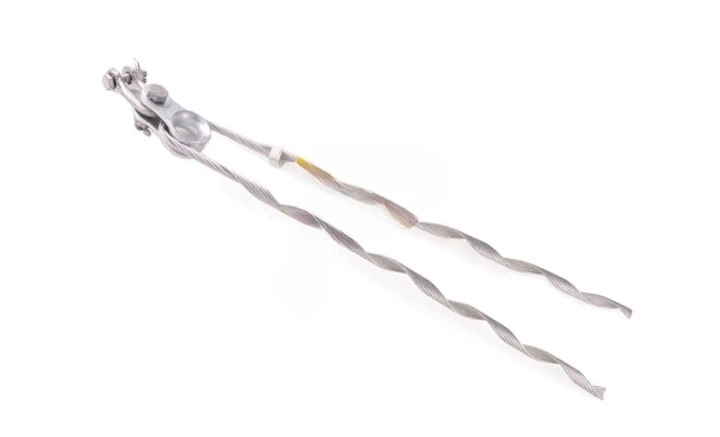
- Mechanical strength and load bearing capacity – the materials must withstand the mechanical stresses. They must also resist mechanical fatigue and failure over time. Consider their tensile strength, compressive strength and fatigue resistance.
- Corrosion resistance – false dead ends face various environmental conditions that can lead to corrosion. Corrosion resistance extends the lifespan of the installation and reduces maintenance needs.
- Electrical conductivity – the materials used provide enough electrical insulation to prevent faults. Conductive paths should reduce electrical resistance to reduce energy losses. Consider the conductivity of materials used for connectors and clamps.
- Environmental conditions – the materials should perform under varying weather conditions. This is including extreme temperatures, humidity and UV exposure.
- Weight and ease of handling – lighter materials are often preferred for ease of installation and handling. Consider the density of the material and ease of transportation and installation.
- Compatibility – materials must be compatible with other components in the system. This is to ensure a cohesive and reliable setup. Consider the galvanic and mechanical fit with existing clamps.
- Cost and availability – the cost-effectiveness and availability of materials influence their selection. Consider the initial cost, availability and lead times for materials sourcing.
- Durability and longevity – long lasting materials reduce the need for frequent replacements and maintenance. Consider the resistance to mechanical wear and tear and the longevity in various conditions.
Technical specifications for false dead ends
Technical specifications for false dead ends consist of various aspects. They help to ensure their reliability, safety, and performance. Technical specifications include detailed requirements for mechanical strength, material properties and electrical performance. Additionally, adhering to these specifications ensures the reliable and safe operation of the false dead ends. The following are the considerations for false dead end technical specifications.
| Catalog Number | Strand 7-Wire | Mean Diameter | Length | Color Code | Units Per Carton | Wt./Lbs. Per Carton |
| FD1-4 | 1/4 | .240″ | 36″ | Yellow | 25 | 17 |
| FD5-16 | 5/16 | .327″ | 39″ | Black | 25 | 24 |
| FD3-8 | 3/8 | .360″ | 42″ | Orange | 25 | 30 |
| FD7-16 | 7/16 | .435″ | 48″ | Green | 25 | 52 |
| FD1-2 | 1/2 | .495″ | 50″ | Blue | 25 | 71 |
- Mechanical specifications – these include tensile strength, compressive strength, load-bearing capacity and fatigue resistance. The false dead ends should be able to withstand compression forces during installation and operation.
- Material specifications – false dead ends are from materials such as steel, aluminium, ceramics, and composite materials. The material selected should offer high tensile strength, corrosion resistance..
- Electrical specifications – consider the insulation resistance and dielectric strength. High resistance helps to prevent electrical leakage and withstand high voltages without breakdown.
- Environmental specifications – this includes temperature range, corrosion resistance and UV stability. The materials should resist corrosion in various environments and help prevent degradation.
- Design specifications – consider the use of clamps, insulators and anchoring systems. They must provide enough creepage distance and withstand mechanical and electrical stresses. They must also provide anchoring to support the false dead end structure.
- Installation and maintenance – consider the ease of installation and maintenance requirements. They should have designs for quick and efficient installation with minimal tools.
Industry advancements and updates for the dead ends
Advancements and updates in false dead ends focus on improving material properties, design and engineering. The innovations enhance the reliability, performance and safety of transmission lines. These updates help to enhance the performance, reliability and efficiency. Also, staying updated with these advancements ensures the transmission systems remain strong. The following are the common updates and advancements in false dead ends.
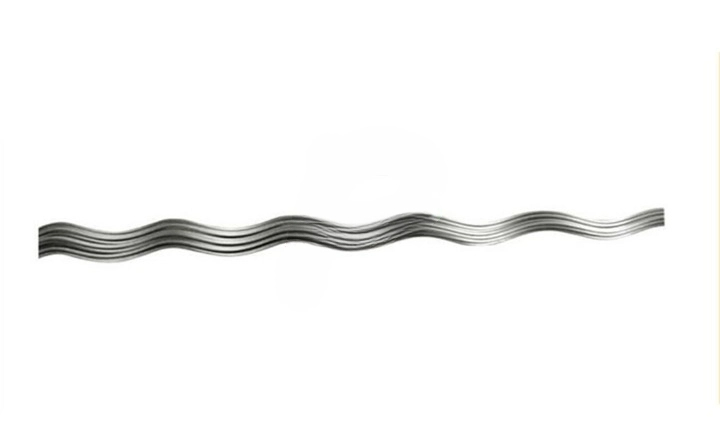
- Advanced materials – new high-strength composite materials offer superior mechanical properties. They also provide reduced weight compared to traditional materials. There is also development of new aluminium and steel alloys with enhanced corrosion resistance. This extends the lifespan of false dead ends. Use of Nano-coatings provide superior protection against corrosion and UV degradation.
- Improved design and engineering – finite element analysis and other tools optimize the design of false dead ends. This ensures they can handle higher loads and stresses without failure. Modular designs make installation and maintenance easier and more efficient.
- Enhanced vibration dampening – new vibration dampers have designs to mitigate broader ranges of frequencies. This helps provide better protection against wind-induced vibrations. Innovations in smart damper technology allow for self-adjusting systems.
- Smart monitoring and diagnostics – integration of Internet of Things devices enables real-time monitoring of mechanical stress, temperature and other conditions. Advanced sensors can be also embedded in false dead ends to track their condition. Data analytics platforms process this information to provide actionable insights.
- Enhanced safety features – advances in insulator technology provide better electrical insulation and mechanical strength. This reduces the risk of electrical faults and mechanical failures. Use of fire-resistant materials helps prevent the spread of fires along the transmission lines.
Community forums and interactions for false dead ends
Engaging with community forums and professional groups helps in staying updated on advancements and best practices. These forums offer valuable insights, ease knowledge sharing and provide networking opportunities. Additionally, engaging in these forums helps to ensure the continued growth and expertise in the field. The following are the common forums related to false dead ends.
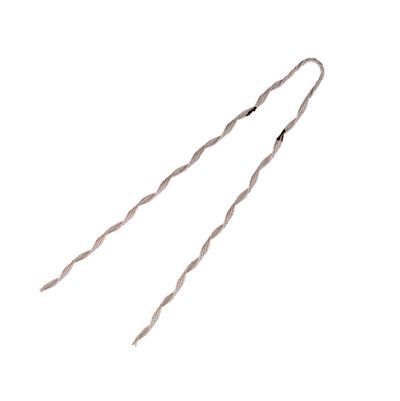
- Professional organizations and societies – take part in conferences, workshops and online forums. This includes platforms like IEEE Power, CIGRE and Energy Societies.
- Online technical forums and communities – these include Electrical Engineering Stack Exchange and Eng-Tips forums. They provide platforms where engineers from various disciplines discuss technical issues.
- Social media groups – this is including LinkedIn groups, reddit and Facebook groups. There are various professional groups related to electrical engineering and power transmission. They allow engagement, sharing of articles, discussions and seeking of advice.
- Industry conferences and events – it is also advisable to engage in events focused on the transmission and distribution industries. This is including sessions, workshops, exhibits and networking events. Some of these include DistribuTech, IEEE, PES and T&D.
Frequently asked questions
False dead ends help in managing stress, ensuring stability and reducing sag. They also prevent mechanical failure due to environmental factors.
Corrosion resistance ensures the longevity and reliability of false dead ends. This also helps reduce maintenance needs and preventing failures.
Smart dampers adjust to changing environmental conditions, optimizing vibration control and reducing the risk of mechanical damage to the conductors.